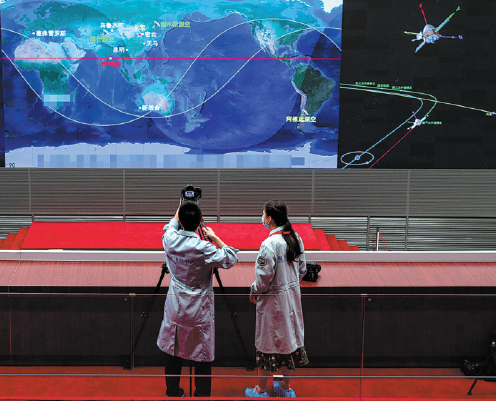Hong Kong PolyU camera plays major role in mission
By GU MENGYAN in Hong Kong | CHINA DAILY | Updated: 2020-08-03 07:10

People will get a closer look at Mars early next year when China's first independent probe to the Red Planet arrives on a seven-month journey that began on July 23.
Some photos and videos will be captured by the Mars Landing Surveillance Camera, developed by scientists at the Hong Kong Polytechnic University.
When the lander of Tianwen 1 descends to the Martian surface, its 390-gram camera will start to take photos despite the extremely low temperature.
The engineers who developed the camera faced the challenge of building a multifunctional device that is as light as possible, said Yung Kai-leung, leader of the 20-member team and chair professor of precision engineering at the PolyU.
Yung elaborated on the camera's functions in an interview with China Daily. The camera can capture ultrawide angle images of Mars with low distortion. It's a tough little camera, built to sustain impacts 6,200 times greater than Earth's gravity, he said.
The PolyU scientists have been collaborating with the China Academy of Space Technology for a decade, and the camera is the fruit of that partnership.
It will monitor the landing, the surrounding environment and the movements of the rover as the solar panels and antennae are unfolded to begin their work.
The PolyU team has worked on projects like Chang'e spacecraft lunar probes, including Chang'e 5, scheduled to be launched later this year to collect samples from the moon's surface.
Robert Tam Wai-man, interim director of PolyU's Industrial Centre, where the camera was manufactured, described the Mars mission as humanity's most important space probe so far. He added that developing the lightweight camera was one of the most challenging tasks of his career.
The team began working on it in 2018, and the project took more than a year to complete. There were innumerable tests, Tam said.
Even after the initial testing in Hong Kong, more tests were needed on the Chinese mainland. Yung said Hong Kong doesn't have the facilities for vacuum thermal testing and other critical trials.
Hong Kong researchers' advantage, he said, is the creativity of their design and their thinking on the global perspective. Regarding the testing of the equipment, however, the mainland was the ideal place.
Yung said the hourlong commute inside the Guangdong-Hong Kong-Macao Greater Bay Area is critical for the development of Hong Kong's technology and innovation. It eases the supply chains for tech components and for scientific discussions between researchers in Hong Kong and across the border.
The momentum from the Bay Area collaboration is also expected to expedite development of Hong Kong's financial tech sector, which will give the city's tech talents another boost, with more option to pursue, he said.























